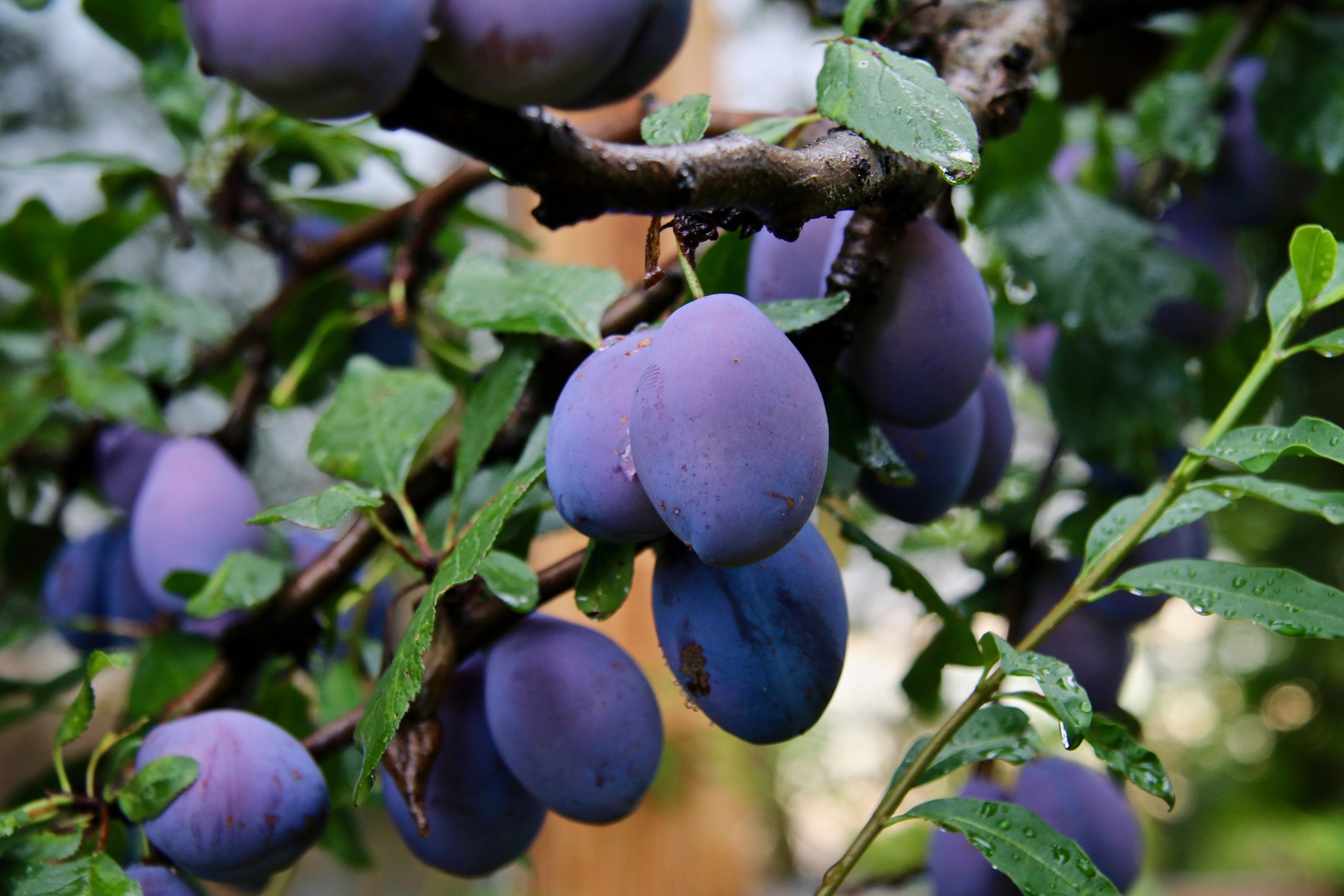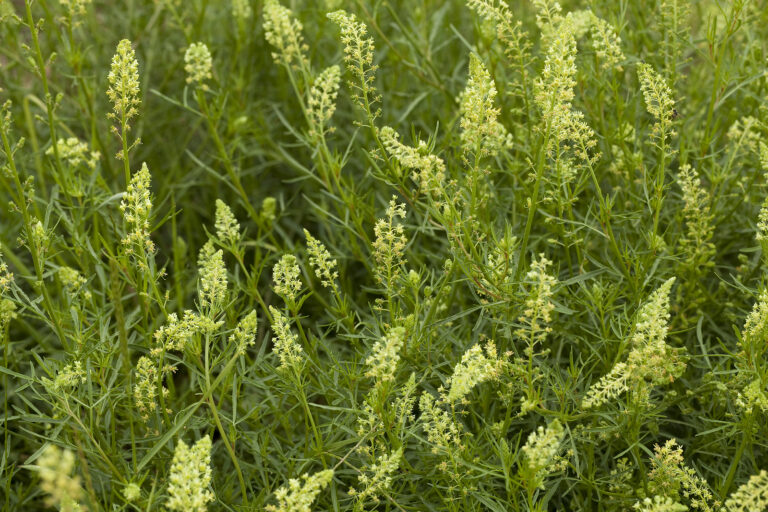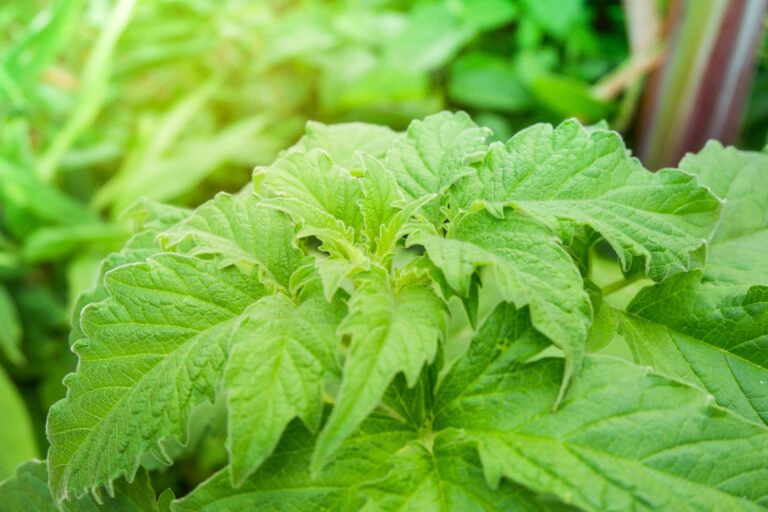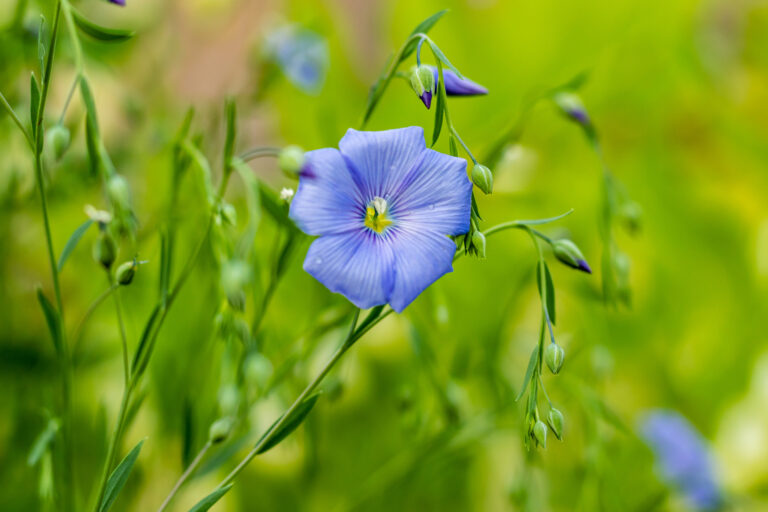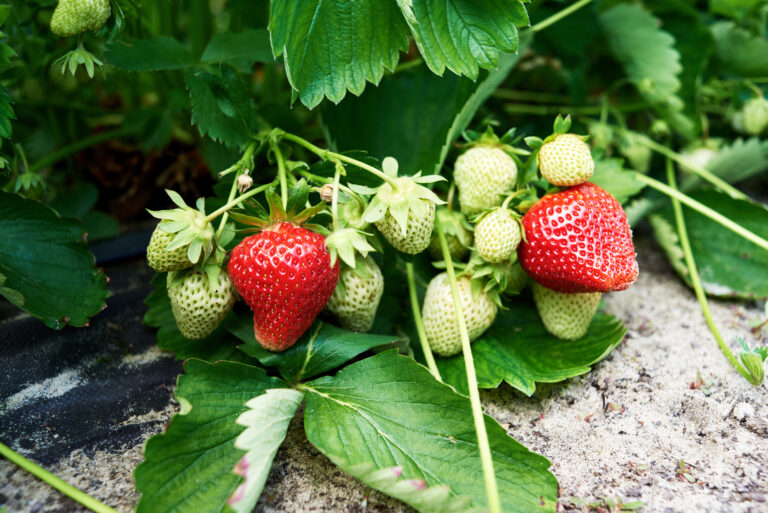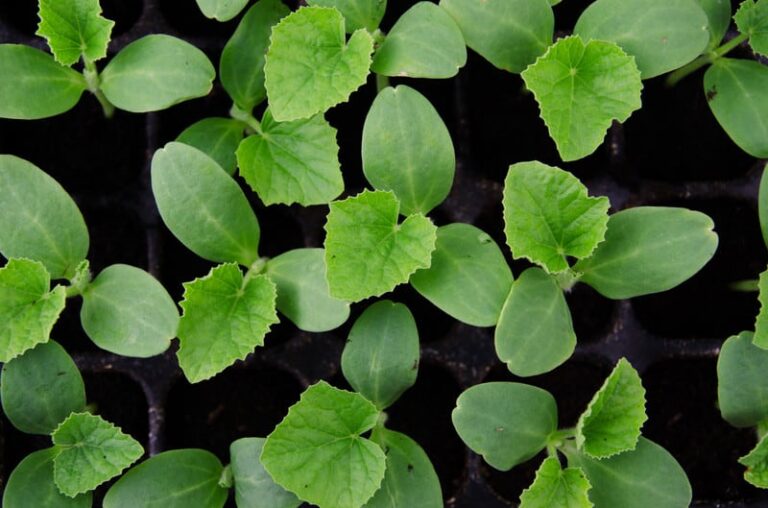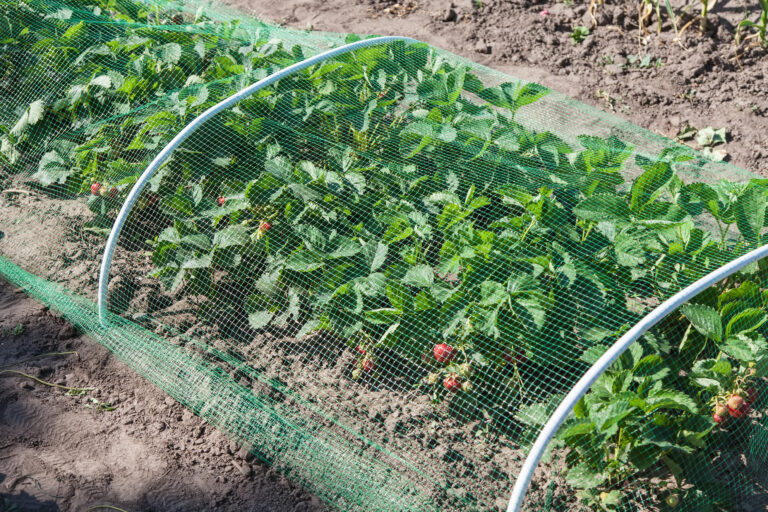Plum Tree Planting, Care, and Pruning Guide for Success
Plums are a diverse group of fruiting trees. Plums can be found in most temperate regions of the world. There is a wide range of tree sizes, forms, colors, and flavors.
European plums are blue and widely grown. Japanese plums are red and very popular. Native American plums are small and tart. Damson plums are deep blue and are a subset of European plums, so too are gages, which are commonly green. Prunes are a type of European plum with an extra high sugar content (which allows them to be dried without fermenting at the pit). Cherry plums are small native or wild plums. Plumcots and pluots are hybrids between plums and apricots.
Plums have varied bloom times—early spring to late spring. Some are self-fertile and others require a pollinator. Some plums are suitable for growing in chilly northern regions; others can be grown in mild winter regions.
Related article:
Here is your complete guide to growing plums.
Best climate to grow a plum tree
- Plums grow in Zones 4 to 10. Contact the nearby Cooperative Extension Service for plum varieties that grow best in your area. A nearby garden center will carry plum varieties for your region.
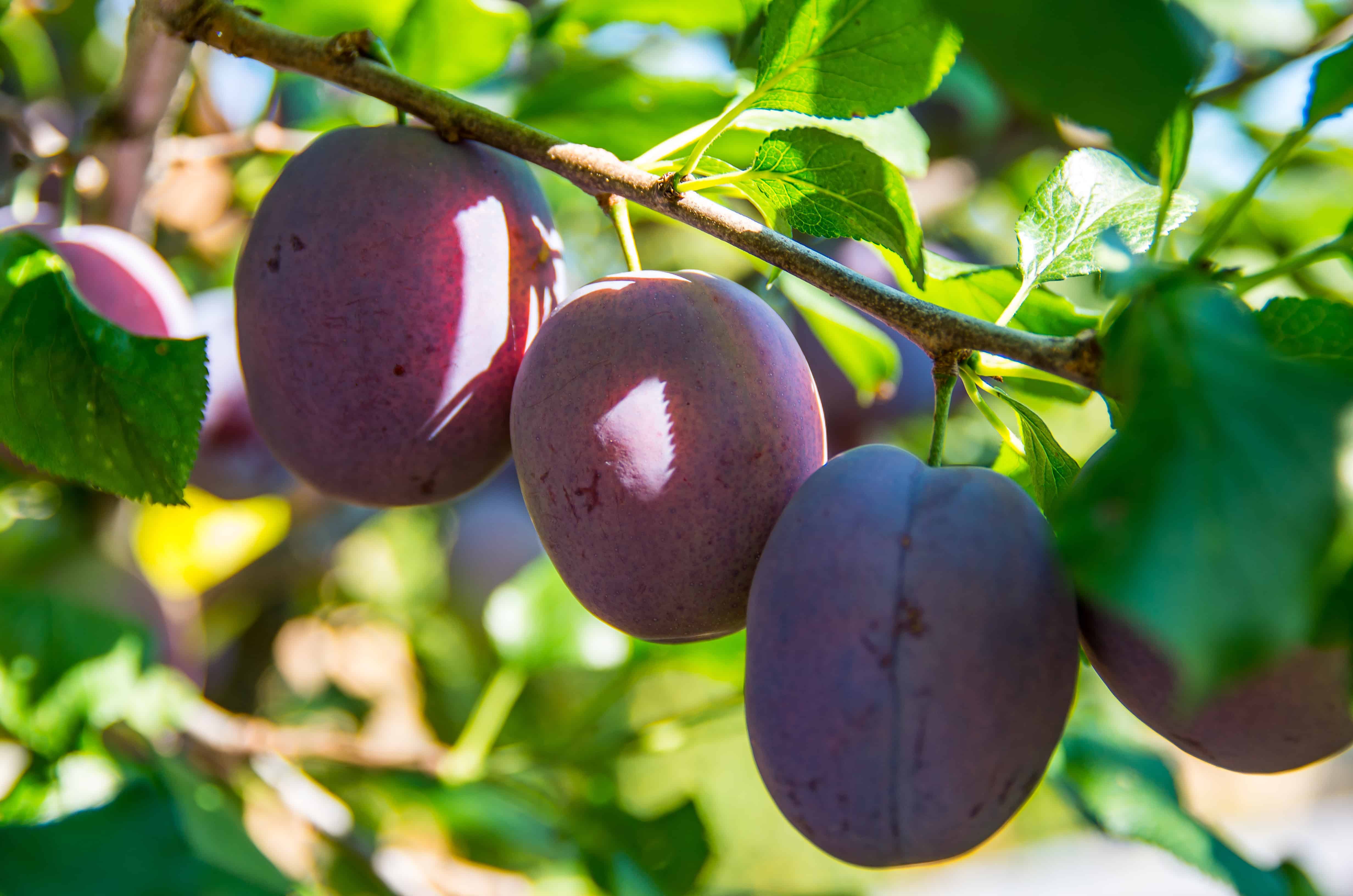
How to choose the right plum tree
- There are many plum varieties. Contact the nearby Cooperative Extension Service for plum varieties that grow best in your area.
- Plums can be broadly divided into three types: European, American, and Japanese.
- European and American plums will grow anywhere apples grow.
- Japanese plums will grow anywhere peaches will grow.
- European plums (Prunus domestica) grow best in Zones 4 to 9. They are late blooming and are usually not damaged by frost. They can tolerate clay soil, but loamy soil is best. They originated in Europe. Subspecies of European plums are damsons and bullaces.
- Japanese plums (Prunus japonica) are semi-hardy; they grow best in Zones 6 to 10; some will grow in zones colder than Zone 6. Japanese plums originated in China.
- American plums (Prunus americana) are the most cold-tolerant. They grow as far north as USDA Zone 3. They tolerate drought and require well-drained soil. American plums originated in the United States.
- Choose a plum that can tolerate winter cold where you live.
- Plum trees can be purchased bare root, balled and burlapped, or in a container. Plant bare-root trees when they are dormant in late winter or early spring.
Where to plant a plum tree
- Plant plums in full sun. Plums can tolerate partial shade, but the yield will be less.
- Plant plums in deep, well-drained soil that is moisture retentive. Prepare the planting site by working in plenty of aged compost, aged manure, or commercial organic planting mix before planting.
- Plums prefer slightly acidic soil with a pH of 6.0 to 6.8
- Do not plant plums in waterlogged or sandy soil. Plums do not like wet feet.
- Avoid planting plums in low spots that can collect cold air or frost in spring. Blooms are vulnerable to frost and must be protected.
- A good location for a plum tree is a northern exposure that stays cooler longer in spring and encourages late bloom.
How to plant a plum tree
- Plant bare-root trees in early spring as soon as the soil can be worked while the trees are still dormant.
- Plant container-grown or balled and burlapped trees in spring or early summer before hot, dry weather comes. In mild-winter regions, plum trees can be planted in the fall.
- Prepare a planting site in full sun that is sheltered from a prevailing breeze or wind.
- Work well-rotted compost or manure into the soil.
- Dig a hole half again as deep and twice as wide as the tree’s roots. Add a cupful of all-purpose fertilizer to the bottom of the hole.
- Put a tree stake (or support wires for a fan) in place before planting. Drive the stake into the ground to the side of the hole to at least 2 feet deep.
- Set the plant in the hole so that the soil mark from the nursery pot on the stem is at the surface level or an inch or two deeper than the surrounding soil. Remove all twine and burlap from balled and burlapped trees. Spread the roots out in all directions.
- Re-fill the hole with half native soil and half aged compost or commercial organic planting mix; firm in the soil so that there are no air pockets among the roots. Water in the soil and create a modest soil basin around the trunk to hold water at watering time.
- Secure the tree to the stake with tree ties.
- After planting, water each tree thoroughly and fertilize it with a high-phosphorus liquid starter fertilizer.
Spacing plum trees
- Space full-sized trees 20 to 25 feet apart.
- Space semi-dwarf trees 12 to 15 feet apart.
- Space dwarf trees 8 to 12 feet apart.
Plum tree pollination
- European plums and damson plums are generally self-pollinating.
- American plums require cross-pollination.
- Japanese plums require cross-pollination with few exceptions. (Self-fertile Japanese plums will produce a larger crop when planted with a pollinator.)
- American-Japanese hybrid plums usually need cross-pollination by an American or Japanese variety.
- For cross-pollination to occur, two plums must be flowering at the same time. Some plums flower early in spring; others flower mid-spring and still others flower late in spring; early and late flowering cultivars will not cross-pollinate because their flowers are not open at the same time. Contact the nearby Cooperative Extension Service for a list of recommended varieties, the time period they flower, and suitable pollinators.
- Suitable pollinators must grow within 100 feet of each other and flower at the same time. A good strategy is to plant two or three different varieties of either European, American, or Japanese plums to ensure pollination.
- Choose a self-fertile variety if you can plant only one tree.
Plum tree rootstock
- Plum tree rootstock will determine the height of the tree. Dwarf plums grow 8 to 10 feet tall; semi-dwarf plums from 10 to 12 feet tall; standard plums can grow to 20 feet tall or more.
- The fruiting wood or stems of a plum tree are commonly grafted onto a rootstock that is suitable for the soil it will grow in and can withstand common diseases. Growers select rootstocks suitable for the region where a tree will be sold.
- Here are common plum rootstocks: ‘Myrobalan’ (can produce a tree 20-feet tall): ‘Nemaguard’ (resists soil pest and requires well-drained soil); ‘Pixie’ (dwarfing rootstock that produces trees about 10 feet tall); ‘Mariana’ (produces semi-dwarfing trees and tolerates moist soil).
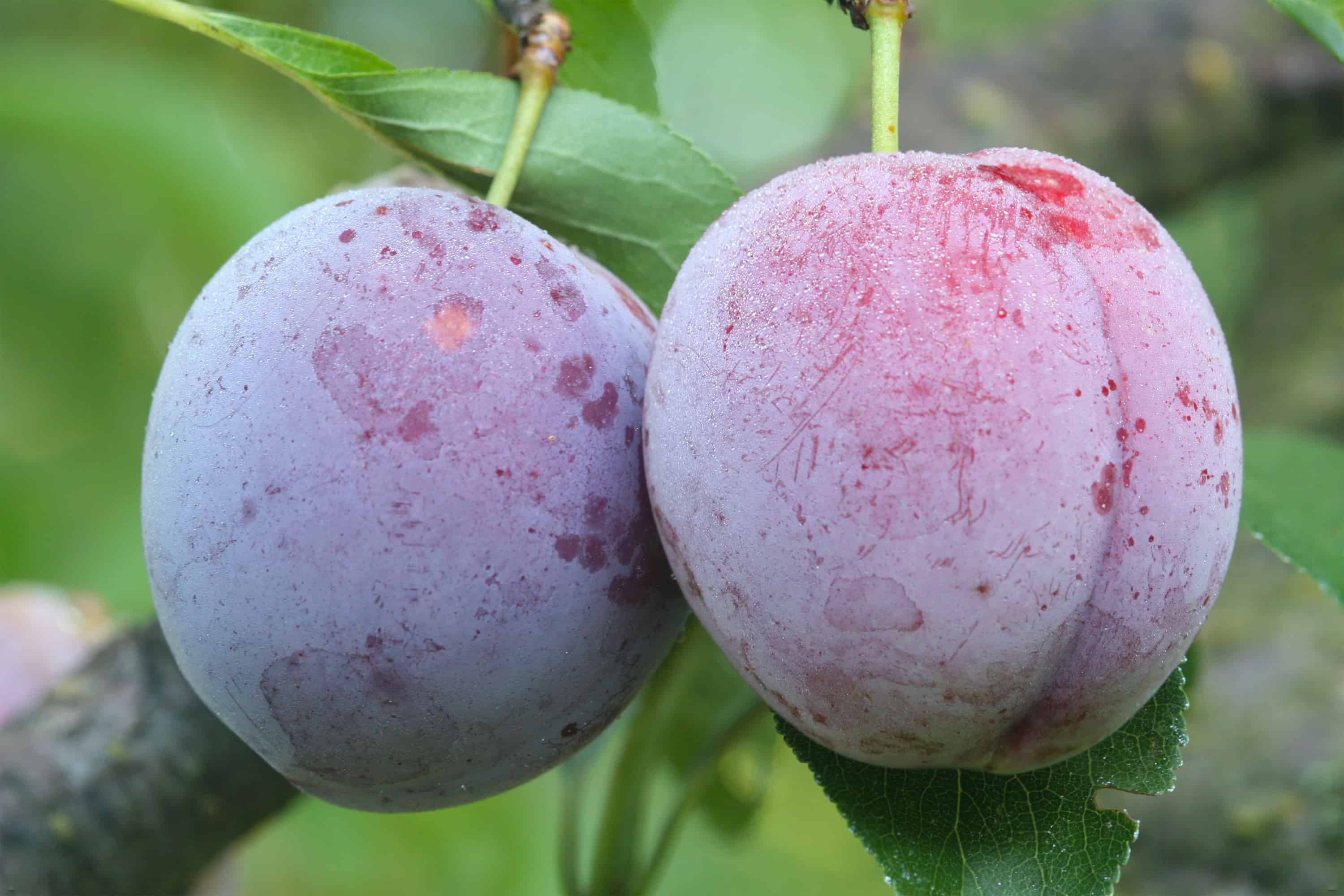
Plum tree yield
- Dwarf plums will produce 30 to 50 pounds of fruit each year.
- Semi-dwarf plums will produce 75 to 100 pounds of fruit each year.
- Standard trees produce 100 to 150 pounds of fruit each year.
Container growing a plum tree
- Dwarf plum trees can be grown in containers.
- Choose a large pot or tub at least 18 inches wide and deep that is well-drained.
- Plant trees in a commercial organic potting mix.
- Keep the soil evenly moist but not wet.
- Feed plum growing in containers with an all-purpose fertilizer that is slightly higher in potassium.
- Repot the tree after two years into a container that is 24 inches wide and deep.
Watering a plum tree
- The first summer after planting, water a plum tree weekly. Once the tree is established it will need only infrequent watering.
- Keep the soil evenly moist during the time fruits are swelling so that they reach full size. If the soil dries out and then water is added, plum skins are likely to split.
- Test the water to make sure it is not high in salt, boron, or chlorine.
Feeding a plum tree
- Feed trees in early spring by spreading several inches of aged compost or aged manure beneath the dripline of each tree. Also, in spring, feed trees with an all-purpose (10-10-10) fertilizer; do this before fruit sets. Do not fertilize plum trees between fruit set and harvest.
- If tree growth is slow test the soil for nutrient deficiencies. If growth is vigorous and overly lush; plant a cover crop around trees to use up some of the extra nutrients.
Plum tree care
- In early spring, protect trees that have leafed out or are budded or blooming from frost. When frost is predicted cover trees with a heavy-duty row cover or a large sheet of plastic.
- Keep the area around plum tree weed-free to avoid competition for nutrients and water
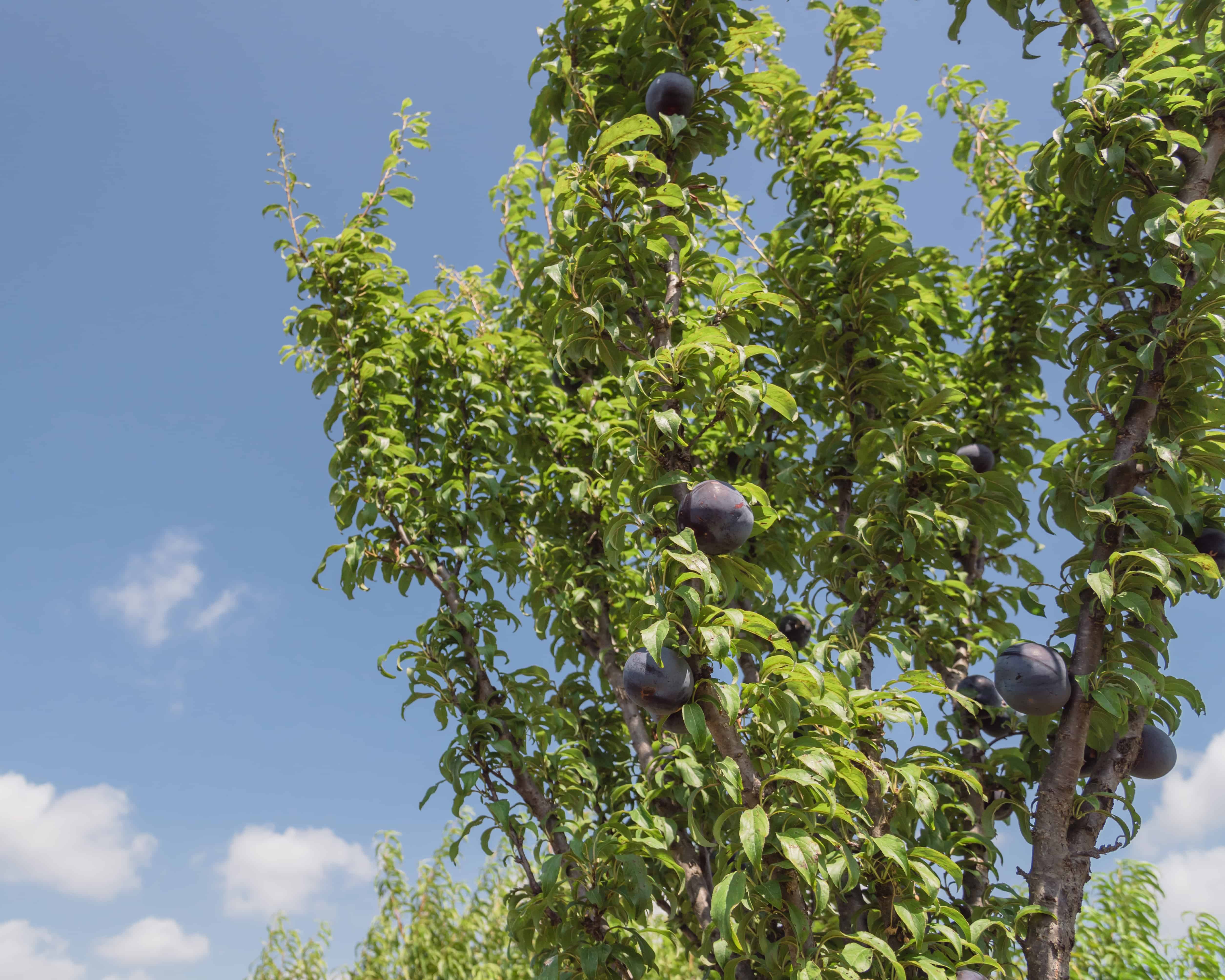
Training and pruning European plum trees
- European plums have an upright growing habit. European plum seedlings are usually sold as branchless whips. They are commonly trained to a central leader or modified central leader form.
- At planting time in spring: Starting with a whip, cut off the central leader with an angled cut just above a bud at about 5 feet high. If the seedling has lateral branches, remove any laterals lower than 18 inches; prune back remaining laterals by half.
- First summer: cut back main laterals to about 8 inches from the start of this year’s growth; cut to buds that ace outward; cut back new shoots or lateral to about 6 inches; leave the central leader untouched.
- Second spring after planting: cut back the central leader to about one-third of last year’s growth.
- Following springs: cut back the central leader by two-thirds of the last year’s growth until it reaches maximum height. Cut out any dead, damaged or diseased wood. Remove old, unproductive growth to clear congestion at the center of the tree. Tip prune the central leader to about 1 inch of the previous year’s growth. Prune for shape,
- Following summers: prune and thin fruit along the length of laterals; plums do not grow on spurs like apples and pears.
Training and pruning Japanese and American plum trees and hybrids
- Japanese and American plums have a spreading growth habit. Japanese seedlings usually have several branches. They are commonly trained to an open center shape with or five main scaffolds.
- First-year: Select 3 or 4 well-spaced main laterals and prune each back by half; cut to buds that face outward. Cut off the central leader to just above the topmost lateral.
- Second-year: laterals chosen last year will now have new growth called sub-laterals; choose 3 or 4 of each and cut them back by half; also remove all weak, crowded, crossing; and shoots growing from the main trunk. The limb framework is not established.
- Following years: cut out dead, damaged, or diseased wood; thin congested wood to that sunlight and air can get to the center of the tree.
How to prune a plum tree step-by-step
- Plums bear on one-year-old shoots and spurs that grow on older wood. The objective of pruning is to maintain seasonal growth of the one-year wood and to keep the center of the tree open to sunlight without which the fruiting spurs will die
- Do not prune in winter; prune after buds have opened and new growth has begun; this will make it harder for bacterial canker disease and silver leaf disease to enter pruning wounds.
- Prune to remove all diseased, dead, and broken branches.
- Remove fast-growing vertical branches called watersprouts.
- Remove shoots that grow from the root below the soil, called suckers.
- Remove crossing and rubbing branches that can injure each other.
- Remove V-branching branches, called crotches; narrow crotch branches cannot support the weight of fruit.
- Do not prune more than one-third of the total tree each year.
- After harvest, prune up to ¼ of the shoots that just fruited. Cut each shoot back to a new, lower side shoot so that next year’s fruit is borne closer to the center of the tree.
- Thin out old lateral stems and branches and sub-laterals that no longer bear fruit. This will give fruit-bearing young branches and spurs plenty of sun and space for growth and fruiting.
- Plums tree shoots grow 10 to 24 inches each year; nonbearing trees have more shoot growth than fruiting trees. If the tree does not grow this much check soil nutrient levels and add fertilizer as necessary. If growth is vigorous and lush but there is a lack of fruit, reduce fertilizer and plant a cover crop to remove nitrogen from the soil.
Thinning plum tree fruit
- Fruit drop in early summer is natural; it’s referred to as “June drop”. June drop is the tree’s natural way to drop excess fruit.
- Additional thinning may be needed. Thin fruit from trees that are heavy-laden.
- Remove smaller or misshapen fruit when they are about the size of a marble.
- Leave about 4 inches between each large plum on large-fruited cultivars. Leave 2 inches between each fruit on small-fruited cultivars.
- Most plum trees produce more fruit than they can physically support. Place forked stakes under fruit-heavy branches.

Harvesting plums
- Japanese and American plum trees commonly begin to bear fruit 3 to 4 years after planting.
- European plums begin bearing fruit 4 to 5 years after planting.
- Plums are green until just before ripening then the green gives way to color. Japanese plums turn from green to red. European plums turn from green to blue.
- Plums have the best flavor when they ripen on the tree. Plums do not ripen at the same time; taste test fruit to decide if you should harvest.
- Pick European plums when they are soft and sweet.
- Pick Japanese and American plums when they are firm-ripe (when the flesh begins to give way to thumb pressure); let them finish ripening on the kitchen counter.
- Leave a short stalk attached to the fruit to prevent skins from tearing and to avoid damaging next year’s fruit buds.
Storing plums
- Slightly soft plums are best for fresh eating; firm plums are best for cooking, preserving, and freezing. Eat ripe plums right away; slightly underripe plums will keep for about two weeks.
- Store plums in the refrigerator for a few days. Freeze or dry extra plums.
Plum tree propagation
- Plums are propagated by grafting. The fruit-producing woody portion of the plant (called a “scion” or “bud”) is grafted onto the root system.
- Grafting in early summer will push out new growth the same season.
- Where seasons are short bud later in summer for growth the following season.
Plum tree pests, diseases, and problems
- Black knot a fungal disease can attack tree limbs. During the dormant season remove any dark, knobby growth or galls along with 12 inches of healthy wood. To prevent black knot, spray trees with lime sulfur when the buds swell and again a week later.
- Leaf spot is a fungal disease that causes dark spots or shot holes on leaves and early leaf drop. Collect and dispose of diseased leaves. The next spring spray swelling buds with lime-sulfur every 1 to 3 weeks in wet or humid weather.
- Plum curculios are brown, long-nosed beetles that cause crescent-shaped scars on fruit. Tap the tree and adult plum curculios will fall down; catch them on a white cloth and dump them in soapy water.
- Birds will eat buds in winter and ripening plums in summer. Net trees to keep birds away. Small trees can be protected by a net cage.
- Brown rot is a fungal disease that causes soft, brown, fuzzy mold patches on fruit; spray trees with lime-sulfur when buds begin to turn green in spring; during bloom spray trees with sulfur if the weather is humid, rainy, or above 70°F. Brown rot can also cause leaves and blossoms to turn brown.
- Black knot a fungal disease can attack tree limbs. During the dormant season remove any dark, knobby growth or galls along with 12 inches of healthy wood. To prevent black knot, spray trees with lime sulfur when the buds swell and again a week later.
- Bacterial leaf spot can cause dark spots or shot holes on leaves and early leaf drop. Collect and dispose of diseased leaves. The next spring spray swelling buds with lime-sulfur every 1 to 3 weeks in wet or humid weather.
- Mealy plum aphids and leaf curl plum aphids that feed on leaves will cause leaves to curl and become distorted. Aphid excrement will cause leaves to be sticky and gray sooty mold can follow. Knock aphids from leaves with a strong stream of water.
- Moth caterpillars can feed on leaves; caterpillar webs can curl leaves. In winter, spray trees with dormant spray oil to smother overwintering eggs.
- Silver leaf is a fungal disease that causes leaves to have a silvery sheen, branches can die back. Remove and dispose of infected leaves and branches.
- Bacterial canker causes bark or stems to ooze orange resin or gum. Oozing gum may also indicate blunt injury to the wood. Prune away all infected wood and dispose of it in the trash.
- Spider mites can cause leaves to become mottled and discolored; fine silk webbing will be seen on the undersides of leaves. Spray leaves with summer oil to smother mites.
- Wasps and birds can eat ragged holes in ripe fruit. Cover trees with netting and set out wasp traps.
- Codling moth larva can chew small holes in leaves; the holes will be surrounded by black excrement. In late spring place pheromone traps to attract and trap male moths to prevent mating. Trap larvae in sticky tree bands.
- Plum pocket is a fungal disease that causes fruits to become distorted and hollow and to drop early. Remove fruit at the end of the season and clean up debris beneath trees to keep the fungus from overwintering.
- Scab is a fungal disease that causes dark-brown scabs to appear on the skins of fruit; fruit may split and ooze. Spray with a fungicide. Remove and destroy infected fruit.
Fall and winter plum tree care
- Remove rotten fruit still hanging on the tree and clean up fruit and leaf debris beneath the tree.
- Spray trees with dormant spray to control overwintering pests and diseases.
- Prune out branches with black knot disease. Prune for training after bud break in spring.
Plum tree varieties to grow
- European plum varieties (self-fertile) include: ‘Agen’, Arctic’, ‘Bradshaw’, ‘Brroks’, California Blue’, ‘Damson’, ‘Early Italian’, ‘French Prune’, ‘Grand Duke’, ‘Green Gage’, ‘Italian Prune’, ‘Lombard’, ‘President’, ‘Reine Claude’, ‘Stanley’, ‘Sugar’. Japanese Egg’.
- Japanese and hybrid plum varieties: ‘Kaga’, ‘South Kabota’, ‘Abundance’, ‘Beauty’, ‘Burbank’, ‘Burgundy’, ‘Casselman’, ‘Delight’, ‘Duarte’, ‘El Dorado’, ‘Elephant Ear’, ‘Ember’, ‘Friar’, ‘Howard Miracle’, ‘Kelsey’, ‘Laroda’, ‘Late Santa Rosa’, ‘Mariposa’, ‘Meredith’, ‘Methley’, ‘Nubiana’, ‘Ozark Premier’, ‘Pipestone’, ‘Queen Ann’, ‘Redheart’ Santa Rosa’, ‘Satsuma’, ‘Shiro’, ‘Simka’, ‘Sprite’, ‘Stark Giant Cherry Plum’, ‘Starkling Delicious’, ‘Superior’, ‘Weeping Santa Rosa’, ‘Wickson’.
- American varieties: ‘Desoto’, ‘Hawkeye’, ‘Cheney’, ‘Wayland’, ‘Golden Beauty’, ‘Miner’, ‘Compass’, ‘Oha’, ‘Opata’, ‘Sapa’.
- Red-fruited American: ‘Superior’, ‘Underwood’, ‘Monitor’, ‘Redcoat’, ‘Red Glow’, ‘Peperstone’.
Casselman Santa Rosa plum
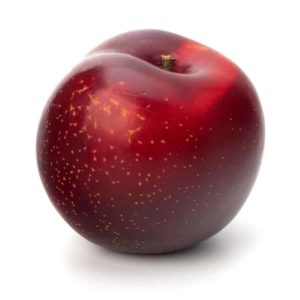
The plum standard is the Santa Rosa plum: that is the rich-tart purplish-crimson skinned plum with amber flesh that shades to dark red near the skin. The Casselman plum is an improved, late-season Santa Rosa plum hybrid with bright red skin and plenty of flavor.
The Casselman is one of the so-called Japanese plums, which is a bit of a misnomer since its lineage—like other Japanese plums–can be traced back to China. The Casselman plum’s ancestors were brought to California from Japan by Luther Burbank around the turn of the twentieth century. Burbank—who did much of his plum breeding in the northern California town of Santa Rosa–was responsible for the introduction of more than 100 different varieties of plums including the Casselman.
What Japanese or Santa Rosa plums have in common is that their rich, distinctive flavor. They are perfect for desserts.
Here is a plum sauce you can enjoy over vanilla ice cream or pound cake: purée 1 pound of sliced ripe Casselman plums in a blender. Strain through a sieve. Stir in ½ cup of sugar and lemon juice to taste. Add ¼ teaspoon of almond extract for extra flavor.
Casselman plums are also great for eating out of hand.
When selecting plums, choose those that are plump and well-colored. They should smell like a fresh plum and should give slightly to gentle pressure. Plums can be stored at room temperature: they will soften and ripen on the counter but they will never get any sweeter than they were when they came off the tree. Don’t choose plums that are too soft or too hard.
When you are ready to eat or prepare a plum, wash it gently then slice it in half around the pit and rotate the halves to separate. The pit will pop out.
Plumcots and pluots
- Plumcots are hybrids of plums and apricots.
- Pluot is a hybrid combination of plums and apricots, with plums being the majority contributor. The pluot tree needs growing conditions similar to a plum tree.
- The Plumcot is a hybrid cross of an apricot and a plum. The characteristics of this hybrid fruit tree are 50 percent plum and 50 percent apricot. the plumcot tree needs growing conditions similar to a plum tree.
Also of interest:
Related articles:
Planning the Home Fruit Garden
Garden Planning Books at Amazon:
- Vegetable Garden Almanac & Planner
- Kitchen Garden Grower’s Guide Vegetable Encyclopedia
- Vegetable Garden Grower’s Guide
- Tomato Grower’s Answer Book
More fruit-growing articles:
Learn how to plant, grow, prune, and harvest your favorite fruits. Click below for all you need to know.
- Apple
- Apricot
- Avocado
- Banana
- Blackberry
- Blueberry
- Cantaloupe
- Chayote
- Cherimoya
- Cherry
- Citrus
- Clementine
- Cranberry
- Currants
- Elderberry
- Feijoa
- Fig
- Gooseberry
- Grape
- Grapefruit
- Guava
- Kiwifruit
- Kumquat
- Lemon
- Lime
- Loquat
- Mandarin
- Mango
- Melon
- Mulberry
- Muskmelon
- Nectarine
- Olive
- Orange
- Papaya
- Passion Fruit
- Peach
- Pear
- Persimmon
- Pineapple
- Pineapple Guava
- Plantain
- Plum
- Pomegranate
- Pumpkin
- Quince
- Raspberry
- Strawberry
- Tangelo
- Tangerine
- Tangor
- Watermelon

